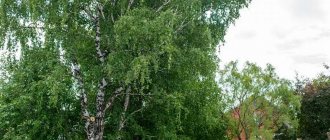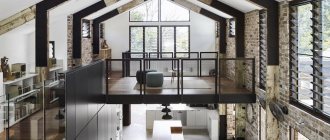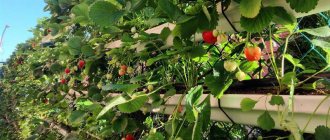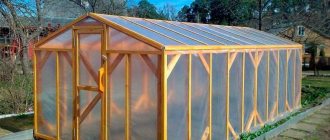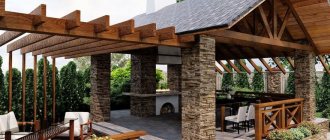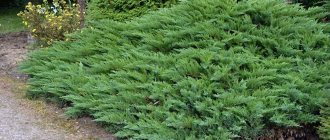Birch is the most dear and beloved tree for Russian people. Of all the trees, it is the only one with white bark. Although there are types of birch trees with brown bark. Since ancient times, the white color in Rus' was the personification of spiritual purity, so they decorate their homes with birch branches, on some Orthodox holidays, to this day. Birch is praised by poets, artists convey its unique beauty on canvas. They sing songs about this tree, comparing it to a beautiful girl or calling it a symbol of our Motherland.
Silver birch is widespread throughout most of our country. The extensive growing area covers the western part of Europe, Altai, and the Caucasus. The warty birch, or weeping birch (lat. Betula pendula, syn. Betula verrucosa) is a deciduous tree of the birch family (Betulaceae).
Description of the species
Silver birch (Betula Рendula) is a thin, graceful tree with a massive, openwork crown. Under comfortable conditions, it grows up to 30-35 meters, with a diameter varying from 60 to 80 cm. The bark is smooth to the touch, snow-white in color, and peels off in thin plates; at the root, the trunk has a black-gray color, with a rougher texture. Young trees, the first 6-8 years, have brown bark.
The branches most often have a drooping shape. Young, one-year-old shoots of branches are red-brown in color. They are densely covered with resinous, odorous wart glands. Basal young shoots are pubescent.
The buds are sticky to the touch, red-brown in color, have a balsamic smell and an astringent taste of resin. Leaves range from 3.5 to 7 cm in length and from 2.5 to 5.5 cm in width. The shape of the leaves is triangular-rhombic or deltoid with a double-sharp-toothed edge. When they bloom, they become sticky and smooth on both sides. The front surface is shiny, dark green, the bottom is matte, green. The petioles of the leaves are usually short, 2-3 times smaller than the leaves themselves.
The birch tree is a monoecious plant, as it has pistillate and staminate flowers. Female catkins are born in the spring, with the blossoming of leaves. Male ones - formed in the fall, growing in bunches of 1-4 pieces. During growth, the male catkin can lengthen 2-4 times, and then you can clearly see the flowers formed on them.
The fruits look like winged yellow oval nuts, united into an earring. Each of them can contain up to 500 nuts. From late summer to mid-winter, the fruits fall from the tree. It grows quickly, but has a weak root system, so it is most susceptible to falling over during storms and strong winds. The life span of the plant under favorable conditions is 120-150 years.
What you need to know about the characteristics of wood
Many types of birch trees are characterized by rapid growth and excellent adaptation to the environment. Wood is almost always easily processed and used on the farm.
Areas of application:
- production of parquet or plywood for renovation;
- creation of skis;
- turning production;
- furniture manufacturing.
Wood does not rot for a long time. You can find items made more than 500 years ago. Previously, trees were considered a symbol of prosperity; people tried to plant birch trees next to their houses.
Birch wood is used to make furniture. Items made from it are expensive and of high quality, but their production is limited.
Physical and mechanical characteristics of wood
Characteristics:
- Density. The material must have a proportional relationship between all parts. That is, if one is dry, the other should be at the limit of hygroscopicity. All types of birch trees used to make furniture have an average density. For later wood, the density is 2 times higher.
- Strength. The most durable is black wood. It resists external damage and has low humidity. Iron, weeping, downy birches have high strength.
- Hardness. On the Brinell scale, birch trees have medium hardness, but are considered wear-resistant. The wood is suitable for making parquet . The hardest is iron birch (82 MPa).
- Weight. The specific gravity of dry wood is 3–5% less than that of wet wood. Moreover, if the birch tree was cut down during the rainy period, the weight of the wood may increase by a third.
- Thermal conductivity. The material does not retain heat well and is susceptible to cracking. Wood is highly valued as lumber, and firewood can produce great heat.
- Humidity. Almost every type of birch is characterized by increased sensitivity to humidity. To prevent deformation of crafts, small products are made from wood. With the help of forced drying it is possible to reduce humidity to 12%.
Varieties
There are several types of weeping birch, which originated and grow not only on our continent, but also on the other hemisphere of the planet. Here are some of them:
- Dalekarli birch. It is extremely rare in the European part; the Scandinavian Peninsula is considered its homeland. It has a distinctive feature from other types of birch due to its leaves of a special wedge shape, with dissected edges, long and sharp teeth. The straight trunk grows up to 20 meters. The crown is openwork, the main branches grow at right angles.
- Silver birch Purpurea. It is distinguished from other species by its unusual dark red foliage, which eventually turns dark purple and then brownish-red. In low light the foliage turns green. Рendula Рurpurea Has an openwork conical crown. Reaches a height of 10 meters.
- Birch Laciniata. The shape of the tree crown is oval. The trunk is white, the branches are directed upward, young shoots tend to the ground. The leaves are jagged, heavily indented, and green in color. Grows up to 15 meters long.
- Silver birch Royal Frost. The white trunk of the tree matches perfectly with the burgundy-purple leaves. The young tree has a brown trunk, which becomes white with age. The petioles of decorative birch are long, so the leaves look down. They have a rhombic shape with pointed tips. An adult tree is about 9 meters tall.
- Birch "Yungi" (Youngii). The dwarf tree grows only 3 meters in height. The trunk is white, straight and thin. The branches gracefully fall almost to the ground. The glossy leaves are bright green in color and rhombic in shape.
Ideal combinations of birch with other plants
Birch gets along with some plant species on the site. Excellent proximity is obtained with the following crops:
- low growing berries. For example, it could be strawberries. This plant does not require much care; it does not need a lot of moisture and sun. The berries ripen well in the partial shade created by the birch crown;
- if the plant is planted on sandy soil, then the ideal neighborhood for birch is geranium, May lilies of the valley or fern.
- creeping tenacious looks good next to birch in almost any type of soil. In general, the height of the crop after the growing season reaches 25-35 centimeters, blooms with small lilac flowers that thrive in shaded areas. The low-growing plant is unpretentious, so both it and the birch will have enough nutrients;
- Thunberg barberries are good company for birch. But, you need to remember that perennials can develop very quickly and create obstruction in the mini-birch grove on your site. To reduce the risk of this phenomenon, you will have to trim the undersized crop in a timely manner;
- A fern will serve as a good background for a birch tree. It will remain bright green and will withstand drought well when the birch roots absorb maximum moisture. The beautiful carved leaves of the perennial and the graceful crown of the tree will create a unique accent on the landscape, and both plants can be located in one large flower bed.
The birch trees on the site do not coexist with coniferous crops. Pine deserves attention. She is an unpleasant neighbor. After all, each of the trees has an impressive root system, which will try to absorb nutrients from the soil as much as possible.
Lilac and birch are planted in the yard at a distance of at least 3-4 meters Source blogs.pravostok.ru
On a note! Birch and coniferous crops are best planted at a decent distance from each other. It is also important not to plant them near foundations and buildings on rubble.
Having a pond near the birch is an alternative solution, since birch loves humidity. This could be an artificial pool, your own reservoir or pond.
Spreading
Silver birch is most common in the European part of our country, in Western Siberia, Altai, and the Caucasus. This species also grows in Western Europe, reaching 25 meters. Weeping birch grows mainly in the forest zone of the corresponding territories. Used for landscaping urban green areas.
In the forest, this species can be found both in mixed deciduous forests, where oak or linden, elm or aspen grow nearby, and in pure birch forests. In the steppe zone it can form forest islands. It spreads by self-sowing in areas of former fires, abandoned fields, and other disturbed habitats. In the city you can often see shoots of young birch trees breaking through roof coverings on the roofs of houses and growing on the roadsides by themselves.
Planting and care
Typically, birch trees growing in urban environments do not reach an age of more than 150 years. But there are species that are more than 500 years old. How long a tree will live largely depends on proper planting and care.
In order to grow a weeping birch yourself, it is necessary to take into account the peculiarities of the soil condition. It should be well drained and moist. Also, before planting a seedling, the gardener is advised to check the presence of groundwater nearby; there should not be any. It is not particularly picky about the composition of the soil, which makes planting easier. But most of all it prefers fresh sandy and loamy soils.
Grows quickly in sunny places. Mature birch can withstand the Russian frosty winter (down to -40 °C). She is not afraid of drought either. But maintaining comfortable conditions for growth in dry weather requires timely watering.
It propagates by seeds and is easily restored after felling or breaking a tree by growths on the stumps. As for planting seeds, they need to be sown immediately after harvesting. The germination conditions are quite simple. You need a cool, well-lit greenhouse. Sowing is done on top of the soil, which needs to be sprinkled with mulch. In extreme cold, seeds do not grow well, then it is better to cover the greenhouse with glass.
The seeds have sprouted. Now the seedlings need to be planted in separate containers and placed in a cool room. In the spring, after the last frost, the seedlings are planted in the ground. The root collar should be at ground level. When planting seeds directly into the ground, the grown seedlings should remain at the sowing site for 2 years before transplanting.
Caring for a birch tree after planting it in a permanent place is quite unpretentious. Trees love light, so you need to take this into account when planting, and make the distance between the holes about 4 meters. Watering should be done directly to the roots. To prevent the soil from drying out, it is better to sprinkle it with leaf humus around the trunk. Immediately after planting, it is recommended to water little by little, but often.
To prevent the crown from shading all the other trees on the site, you can shape it yourself using pruning shears and garden shears. If you want to get a tree with a weeping crown, you may need to resort to grafting the plant. It's quite difficult to do this yourself. Therefore, it is recommended to purchase already grafted seedlings from garden stores.
Superstitions
Superstitious people take into account folk signs that relate to planting birch trees on a site. Superstitions often play a huge role, so we suggest you familiarize yourself with the most common ones:
- Birch sap is one of the main ingredients for brewing a magic potion. Therefore, it is undesirable to plant a tree on a residential area, because it will attract evil witches;
- if birch trees are planted near the house, then there will be no happiness in it. The ancient seers spoke about this;
- when a married couple with children lives in the house, they will not be able to build strong relationships if they plant a birch tree in the local area. Such planting will lead to discord and problems in the family;
- Birch trunks often show growths, which indicate that otherworldly forces have entered the yard. Now the house will be in contact with the afterlife.
Birch can withstand frosty winters well, so it will delight owners in the spring Source photosight.ru
Diseases and pests
The trunk of silver birch, especially when the tree is weakened, is most often parasitized by tinder fungi, honey mushrooms, birch sponge, and chaga. Chaga grows only on living trees. All other parasites spread on a weakened or dead tree.
Leaves are most often affected by silkworm caterpillars, tubeworm beetles, chafer beetles, etc. Many insects drill into the bark of a tree to lay larvae, which harms the bark and the general condition of the birch tree.
Meaning and Application
Birch has many useful qualities. In Rus', this tree has always been loved not only for its beauty, but also for its enormous benefits in everyday life and medicine.
Ways to use birch:
- As a food product. Edible parts are considered to be: phloem, flowers, juice and leaves. Young leaves of the tree are used fresh or after heat treatment. They can be dried and then brewed into tea. Birch sap can be consumed in its pure form or made into beer by adding a certain amount of honey. A powder is made from bast, which is used in food as a thickener. Dried flowers are also added to herbal infusions and teas.
- Medicine. The tree bark has diuretic and laxative properties. Bast is used to prepare medicinal ointments against skin diseases. Birch buds have anti-inflammatory, antiseptic, and expectorant effects. Shoots and leaves, interacting with alkali, have a laxative and tonic effect. An infusion of leaves is also used against inflammatory joint diseases. A decoction of the leaves has a beneficial effect on the dissolution of kidney stones. Birch sap is used as a remedy for swelling. The Chaga mushroom, which grows only on a healthy tree, is widely used by doctors to treat various diseases. Shampoos and soaps based on birch tar have healing properties. Essential oil is made from bast.
- Construction material. Birch bark has water-repellent properties, so it is excellent for roofing and boat construction. The branches are also used to make roofs.
- Decorative properties. Soft, delicate birch wood is easy to process, making it possible to create unique souvenirs and decorative items. Birch burl is also used to make special wooden crafts. Typically, a solid burl beam is used, endowed with unique patterns of growth rings on the cut. Such products do not require additional processing with a tool to create a picture, since nature has already created it.
- Use in everyday life. Birch firewood is the hottest, “long-lasting”. Utensils are made from birch bark. The wood is used to make charcoal, activated carbon, vinegar, alcohol, turpentine, and paper. Glue is made from birch sap. Bast is ideal for making strong ropes and ropes. Bath brooms are made from birch branches and baskets are woven. Different paints are made from different parts of birch. The bark is excellent for the production of professional artistic charcoal chalks.
Interesting Facts
- Five thousand birch seeds contained in one gram can spread over many kilometers.
- Some types of birch trees grow even beyond the Arctic Circle because they are not afraid of the cold.
- The average lifespan of a birch is one hundred years, although there are four-hundred-year-old centenarians in the world.
- In the old days, churches and temples were decorated with birch branches on the Orthodox holiday of Trinity.
- A splinter made from birch produces practically no soot and shines very brightly, so it was widely used in peasant families.
- If you mix a decoction of birch leaves with alum, you can dye the wool yellow.
- Birch firewood is of excellent quality.
- Birch wood makes excellent decorative crafts, as well as gun stocks, plywood, skis and much more.
- Birch bark is the best material for wicker crafts.
To take a steam bath in a bathhouse with benefit and pleasure, you need to take a birch broom with you. But it is not recommended to build anything from birch wood, since it quickly rots.
Use in landscape design
Decorative varieties of silver birch are surprising in their ability to combine with other tree species, for example, conifers. In autumn, when the leaves of the tree turn yellow, a beautiful resonance is created against the background of dark pine needles. Then the bends of the branches, with leaves that have not yet fallen, attract the attention of passers-by.
The type of silver birch on a trunk is very popular. The branches of such a tree tend downward and must be periodically shortened. The crown can be shaped independently, creating truly bizarre shapes. Silver birch is used in landscape design for landscaping forested areas, alleys, and garden plots. Compatible with all deciduous and coniferous plants.
Choosing a landing place
Seedlings are traditionally planted in the autumn-spring period. Gardeners believe that this time is the most favorable. The location should be chosen so that it is slightly shaded. The ideal option is the area behind the house or in front of the facade, where the shadow falls at certain times of the day.
It is highly undesirable for conifers and birch to be neighbors Source mansion1.ru
If you choose such a zone for the development of birch in a summer cottage, you can prevent the evaporation of moisture from the top layer of soil. This will provide sufficient moisture for the root system and will not slow down the growing season.
In addition to choosing a location, you should also decide on the depth of the hole. This parameter depends strictly on individual conditions: the age and size of the root system of the seedlings. Usually no more than 100-1200 cm. It is also necessary to take into account the properties of the soil: loose, slightly acidic soil is suitable. It is allowed to contain a small amount of humus.
Planting birch trees in a front garden with flowering perennials Source avto.goodfon.ru
